Before you read this article, please do check out my YouTube channel, Twin-Cam, where I have a more in-depth video version of this article available. I have over 25,000 subscribers and 3.1 million views, so please do subscribe!
The all-conquering Japanese motor industry has produced some of my generation’s most well-loved and deified vehicles. For people like me, that’s mainly thanks to the likes of Gran Turismo, but in the endless verses of Japan’s incredible creations, one car, in the real world, shines far above the rest. And it doesn’t have a mad spinning Dorito, a big twin-turbocharged straight-six, or even a clever four-wheel-drive system. In fact, it doesn’t have any immediately identifiable or individual mechanical features. Instead, it reinvented a genre some thought dead and became, in the process, the gold standard for the affordable sports car. I am of course talking about the original Mazda MX-5. And today, we’re going to study how this amazing little car came into being, how it became so successful, and the engineering and character beneath that developed a dynasty of adoring enthusiasts.

To all us onlookers, viewing one of these original, or NA, MX-5s through the lens of 2021, the whole recipe appears both simple and somehow eternal. Engine in the front, drive to the rear, a manual gearbox, great styling, and topless fun. A Japanese take on the classic British sports car, so though it’ll rust just as willingly, it will at least keep working. But the scenarios and circumstances that came together to create the MX-5 in 1989 are anything but simple, as this car had a much more convoluted and lengthy development period than anyone would expect. The story begins not in Japan or in the UK, but the United States and Southern California in 1976.
A man named Bob Hall was a journalist at Motor Trend, one of America’s premier car magazines, and one day, he met with a member of Mazda’s R&D department, Kenichi Yamamoto, who asked him what kind of cars he thought Mazda should be making. He answered by stating that they should build an inexpensive roadster, in the mould of the classic British sports car. Though at this point, the heart of the British sports car industry was still very active, its offerings were leaving something to be desired, and within only a few years, the stalwarts of that genre had largely evaporated.
Fast forward five years to 1981, and Bob Hall has secured a position in product planning at Mazda USA. Now he was officially within the Mazda fold and working on normal, run of the mill cars, he once again came in contact with Yamamoto, who brought up, completely out of the blue, that little idea from 1976. Hall began working out-of-hours on his lightweight sports car, nurturing it until it became advanced enough to become an official Mazda project.
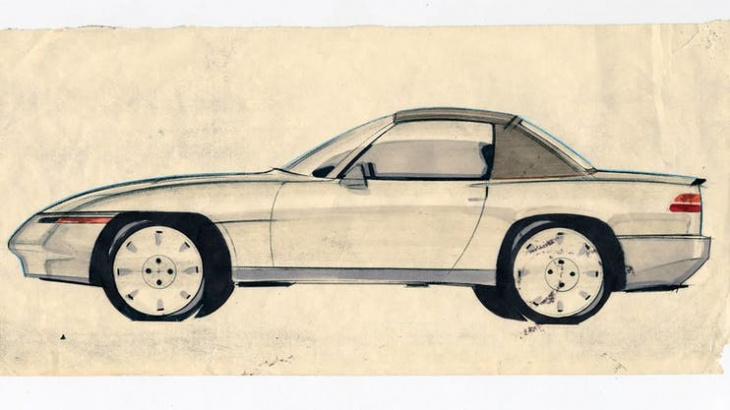
A strategy was formulated in which Mazda had three different design studios working on the lightweight sports car project, all with different briefs. The studio in Hiroshima, Mazda’s hometown, worked on a front-engine, front-drive layout, similar to the M100 Lotus Elan that launched a few months after the MX-5 in August 1989. I can imagine that the idea of a front-drive sports car is concerning to most of you, but it made sense for Mazda to at least explore the idea, as it had the potential to lower development and production costs. The studio up the road in Tokyo worked on a mid-engine, rear-drive layout, much like the existing Toyota MR2 and later MG F, while Mazda in California had the classic front-engine, rear-drive layout.
The three teams converged in August 1984, when their clay models were judged by the Mazda bigwigs. While dynamically, the mid-engined concept would have been best, Mazda decided that the front-engine, rear-drive concept would be the best to be productionised for three reasons. Refinement, practicality, and the big one: it was a convertible.
This factor, though possibly overlooked today, is a serious part of the MX-5’s identity, and is essential to its desirability. The sports cars of the late-‘70s, when Bob Hall first made his proposition, were not all convertibles. Every Lotus being produced by that point was a coupe, and in the mainstream, the final hurrah of Triumph, the TR7, suffered the same problem. Even the long-running Toyota MR2, launched in 1984, was never in the same league as the MX-5 in terms of popularity thanks partly to the lack of a ragtop.

Before we start looking at the actual engineering, as well as the styling and reputation of the car, I think it tells us quite a lot by looking first at the car’s name. For most of the world, these cars are the Mazda MX-5. Boring. And in Japan, the Eunos Roadster, Eunos being one of the three Mazda spin-off brands, much like Lexus and Infiniti are for Toyota and Nissan, that they ran with for a few years in the ‘90s. But famously, in the United States, the car was given a proper name. During its development, Mazda’s head of product planning in the US, Rod Bymaster, was searching for a name to christen their new sports car with. He came across a dictionary, and within it, a Germanic word from the early middle-ages that translates as ‘reward’. That’s what this car is, a reward, and so it became the Mazda Miata.

If there’s one part of this car that absolutely confirms the genre the MX-5 was honouring, without any access to the history, it’s the styling. What the clever folk at Mazda did was take a photograph of the most beautiful small British sports car of all time, the original Lotus Elan, and applied over the top a sheet of tracing paper. Then, by very carefully following the lines they created this. Once rounded off slightly with fewer protruding components and the fitment of some side repeaters, it was ready.
Lotus Elan Sprint. The car the MX-5 takes its appearance from.
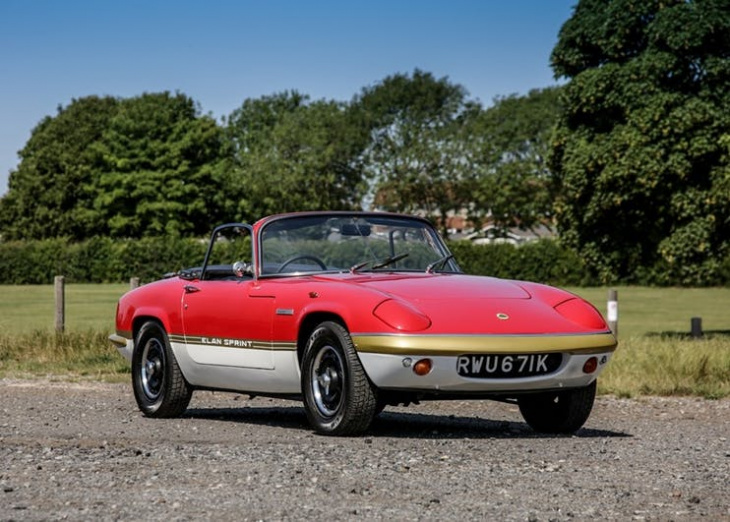
Lotus Elan Sprint. The car the MX-5 takes its appearance from.
What this isn’t, however, is some shameless rip-off of the Elan. It’s much, much more than that. It’s a homage, a love letter to it, and it was executed in such a subtle, dignified, and affectionate way. When the Californian team won control of the project in 1984, they bought a Lotus Elan to study, to see what made it special, and for the design team to sit and look at, picking out its best stylistic features, and transferring them into a shape that was contemporary. But this wasn’t an American only affair, as Mazda departments and independent companies in the US, UK, and Japan all had major input, and I feel it’s this factor that aided the MX-5 in becoming such a success all over the world. It contained all the traits that each individual culture wanted out of a sports car, avoiding in the process some of the ills faced by cars like the Triumph TR7, which was designed by Brits for the Americans.
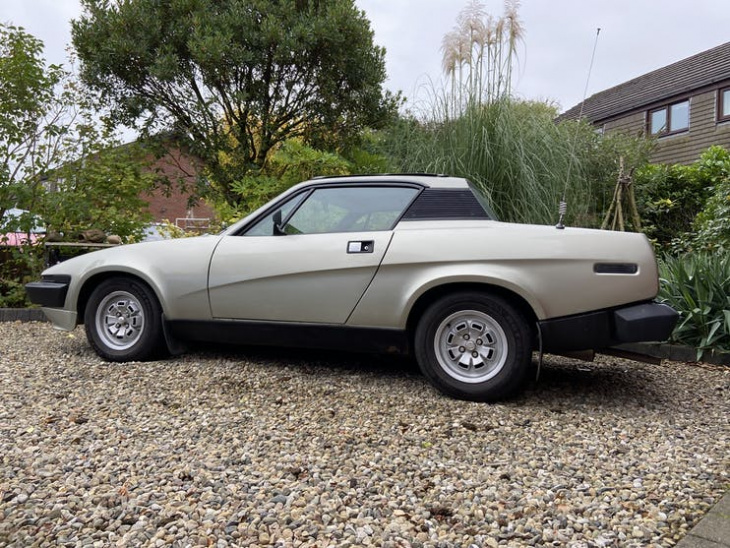
Taken at face value though the NA is very subtle in a way that’s characteristic of cars launched around the tail end of the 1980s and early 1990s, but where it excels is in its character. In the side profile, there’s that tiny swoop around the passenger compartment that gives it a modicum of dynamism, and the same can be said of the bulge in the bonnet. There are a couple of smart touches including the chrome, flush-fitting door handles and the alloy wheels that mimic the Minilites that were such a popular modification to old MGs and Triumphs, but there’s not that much else to speak of. The stance, however, is perfection. Compared to the overall length of the car, the bonnet is long, and the gap between the front wheel and the door screams longitudinal engine, mounted as far back as possible, and therefore sports car. It may appear to be a tiny factor, and people who don’t care about cars will never know the reasoning, but this stance is important. It’s what detaches it completely from the hacked-up shopping cars other manufacturers scrambled to create in response to the MX-5’s unprecedented success. Your Opel Tigras, your Ford Pumas. This is, without anybody seeing what’s underneath, a proper sports car right from the beginning.
And that’s without acutely getting to the crux of the MX-5, which is, as I mentioned, the character. The big smiley face and pop-up headlamps are irresistible to anybody with anything approaching a heart. The MX-5 is a happy car. One that has no inclinations of aggression or snarling instincts. Miata is happy, and Miata lives only to make everyone happy.
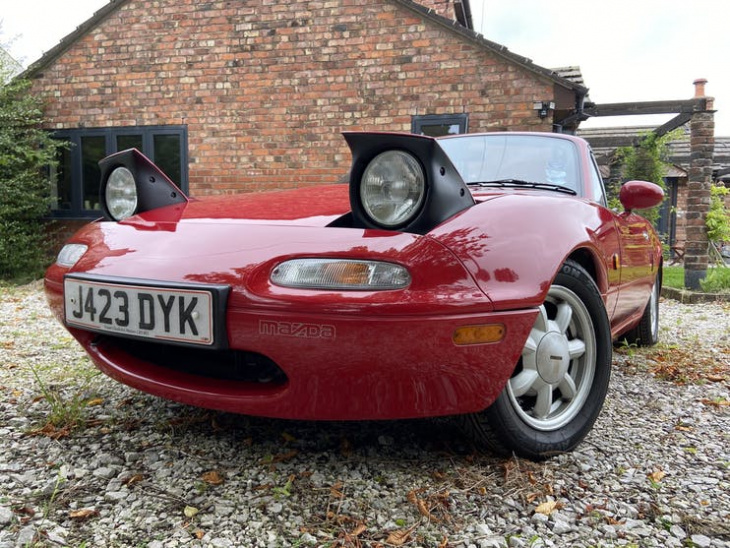
Let’s start the engineering by looking under the bonnet. For a small, unfortunate minority of us, this may seem like a bit of a disappointment, but exotic is not what the MX-5, or any small sports car for that matter, is about. If we look at the philosophy of the lightweight sports car, the conditions set by 1989, and the culture surrounding these cars, we begin to understand why this engine is perfect for the MX-5.
This unit is, for all intents and purposes, the same as you’d find in a Mazda 323 of the era. It’s a 1.6-litre fuel injected four-cylinder with twin overhead camshafts and 16 valves. For 1989, that’s a nice spec. As such, the modifications Mazda made to it were minimal. They obviously had to make it suitable for a longitudinal layout, but apart from that, they developed a stainless exhaust manifold, modified the torque curve to suit a sports car, provided a lightened crankshaft to help it rev quicker, and upped the redline to 7200 rpm. They also gave it a new cam cover, styled to emulate the likes of the Lotus, Fiat, and Alfa Romeo Twin-Cams, emphasising the existence of each camshaft.
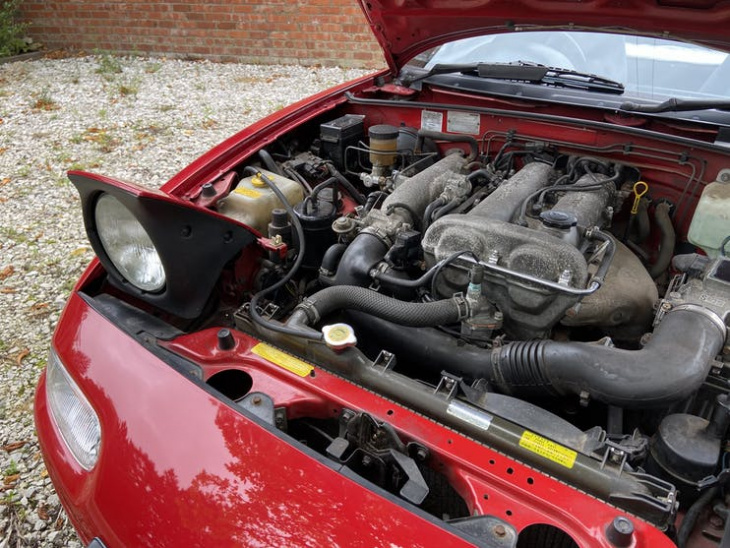
At launch, this little 1600 was the only engine available, producing about 115 bhp and 100 lb-ft of torque. They’re really good figures for 1989, and certainly comparable to the likes of the MR2. From ’94, however, an 1800cc variant of this B-Series engine was installed, improving the power output to about 130 hp. Though never the most powerful of the small sports cars that emerged in the ‘90s, nobody that understands the format and the delivery of driving pleasure ever seriously questioned the MX-5’s power output, but of course, the community never stands still. And this power unit is a big part of why the MX-5 is the preferred sports car for the modifying community. From factory, Mazda offered a turbocharged 323, and so these four-pots react incredibly well to forced induction, with thousands of MX-5s rocking about with well over 200 bhp.
On the end of the crank was a similarly modified Hiroshima parts bin component, a gearbox from the big, rear-drive, Mazda 929. However, this was a component completely unsuited to the dynamics and expectations of a sports car, so the ‘box was almost completely redeveloped, with a much lighter flywheel and synchromesh, shorter and closer ratios, and a redesigned linkage, bringing the gear lever into the perfect position to suit the driver and making the change short and precise enough for the entire throw to sit within merely the flick of the driver’s wrist.

This part of the MX-5’s driving position encapsulates perfectly the meaning of Mazda’s philosophy, jinba ittai, whereby the development of the car centred around the idea of the horse and its rider acting as one. Takao Kijima, who was manager of the MX-5’s development in Japan, remarked a few years ago that horse and rider communicate through feeling, with the horse adjusting its gait to accommodate the archer on its back as they release their arrow. He used that analogy to describe how the MX-5 was specifically developed to create that same relationship with its driver, and that determined the precise ergonomics of the interior in every respect.
I’m about to make a bold, and probably controversial statement. There has never been a better-designed sports car interior than that of the NA Mazda MX-5. Now yes, it is a little plain and it is almost completely black, my personal least favourite colour for a car interior, but – it is just so intelligently designed for one function. Driving. While there is minimal adjustment in the positioning, it’s just about perfect for myself, at 5’ 9”. I can imagine that taller drivers may feel too high in the car, but compared to any of the MX-5’s inspirations, it’s lightyears ahead.
There are no distractions, no gimmicks, no bits of design to take your eyes away from the road in front. It’s functional and all the more attractive for it. This one has been slightly dressed up with little bits of chrome, but you can still see the immense level of focus the designers had. Take the design of the steering wheel, which Mazda had made for them by Momo. It just gets better and better. Originally, they came with this little cover, but literally everybody just takes it off – because racecar. Similarly, Mazda knew that they would be driven, 99% of the time, with their roofs down, and so the question of music comes in. While you could listen to the engine, even in 1989 people expected a stereo, so for the Japanese market, Mazda offered speakers in the headrests, so they would be right next to your ears. That’s a common trick nowadays in convertibles, but for such an affordable car during the early ‘90s, that’s an amazing little feature. But back to driving, all the driver has are a set of simple, white on black gauges. And just for the sake of it, they even give you an oil pressure gauge.
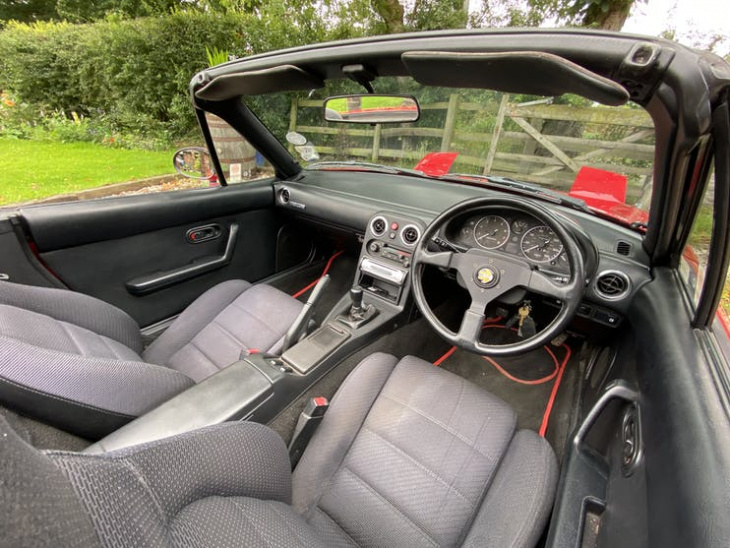
What Mazda couldn’t get to work from the parts bin was the suspension, and that is one place where the MX-5 shines. The engineers fully sent it and went double wishbones all-round. In other words, they did it properly. Like a good 90-odd% of cars, they mounted the drivetrain and running gear on subframes, but in order to make the MX-5 as taught as possible, Mazda engineered the monocoque to sit atop what they called a ‘powerplant frame’, where the front and rear subframes would be linked by a ladder-like truss, running alongside the propshaft, physically and structurally linking the engine and gearbox to the differential at the back. This way, the inertia applied to all the components under acceleration isn’t dampened out by the propshaft bearings. The rear-end of the car reacts to the engine just as the front does. If you’ve ever seen an MX-5 without its body, you’ll have seen what a fantastically focused setup it is. As an addition to this, the later 1.8-litre cars got additional bracing to reduce the twisting of the monocoque, but that’s easily done when the basics of the concept were so well-conceived.
Between the rear wheels sits a run-of-the-mill open differential, but there were a pair of limited-slip diffs available through the NA’s eight-year run, and at either end of the driveshafts, disc brakes at all four corners. Covering those discs, the aforementioned Minilite-style alloys that were designed so carefully that the manufacturer managed to reduce their mass by 10%. These efforts of drivetrain and running gear placement and efficient construction led to a perfect 50:50 weight distribution and a kerb weight of only 955 kg.
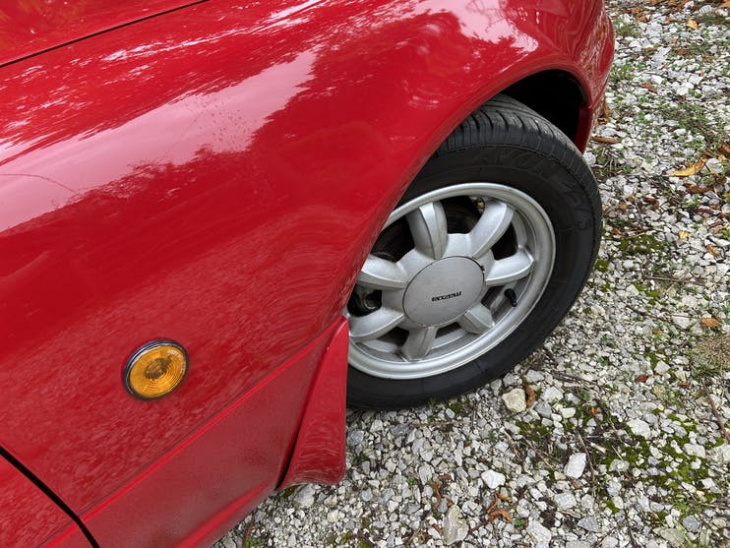
However, I feel we’re walking down the wrong path when we begin waxing on about the MX-5’s engineering, for as brilliant as it is, that is not the reason the MX-5 is so successful. If we judged all open-top sports cars by that metric, many of the world’s favourite classic sports cars would fall into the sea. The key is the cool-factor of an open-top sports car, and we come back yet again to personality. As I said before, Miata exists to make people happy, and there’s no greater example of that than the immense public reaction to the MX-5’s launch. Almost overnight, a tiny open-top Japanese car became the car to be seen in, especially in the United States, where even Mazda wasn’t expecting demand to outstrip supply within days. The company had expected, based only on Bob Hall’s insistence the project would work, sales of up to 20,000 cars per year. For a few years, they sold closer to 40,000 cars.
When the MX-5 was launched in February 1989, only a handful of sports cars existed. The Toyota MR2 had been around for a few years, but it was a coupe, as was the Honda CRX, but that small coupe was front-drive. The Alfa Romeo Spider was still being produced, but it was a relic of the 1960s. The MX-5 was bang up to date. Suddenly, dozens of manufacturers were clambering to design and produce an MX-5 competitor, and the market for convertibles exploded.
In the front-drive corner were the all-new Alfa Romeo Spider and Fiat Barchetta, joining the M100 Lotus Elan. Following more closely to Mazda’s recipe was the MG F, its biggest competitor in the UK, which placed its engine in the middle, much like Lotus opted to do in creating the super lightweight Elise. Towards the luxury end of the market were the Mercedes-Benz SLK and BMW Z3, but the MX-5 also pushed open the door for larger, more powerful sports cars, such as the Honda S2000, and it’s seriously unlikely that any of the current crop of sports cars, from the Toyota GR86 to the BMW Z4, would exist in the form they do if it wasn’t for Mazda’s bravery over thirty years ago.
Rover's mid-engined MG F, the MX-5's biggest competitor in the UK, actually outsold the Mazda in this country.
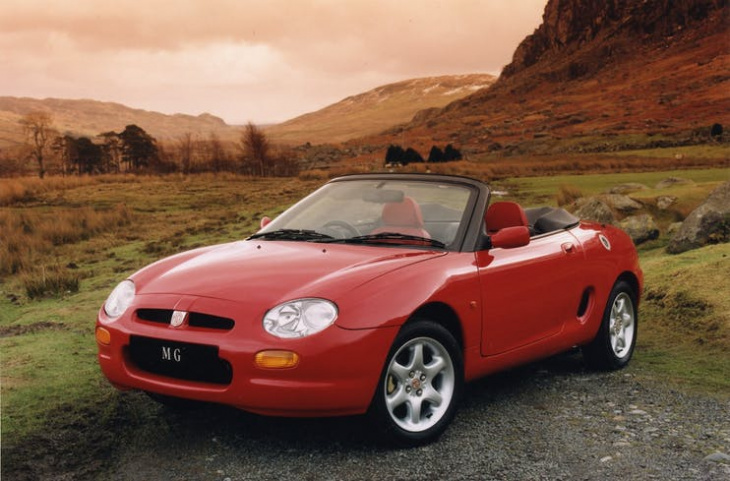
Rover's mid-engined MG F, the MX-5's biggest competitor in the UK, actually outsold the Mazda in this country.
Of these original, NA MX-5s, over 430,000 were produced, making it by far and away the most popular sports car of its era, and as we all know, this little thing jumpstarted the MX-5 legend, now spanning over thirty years and well over a million cars. There should be no questioning why or how the MX-5 has made itself the best-selling sports car of all time, but somehow there are still people that question it, or prefer some of the alternatives. And although I endlessly respect the competition, there is no denying that the MX-5 got the recipe pretty much perfect. But without making performance-based statements, it is, undoubtedly, the most important sports car of all time.
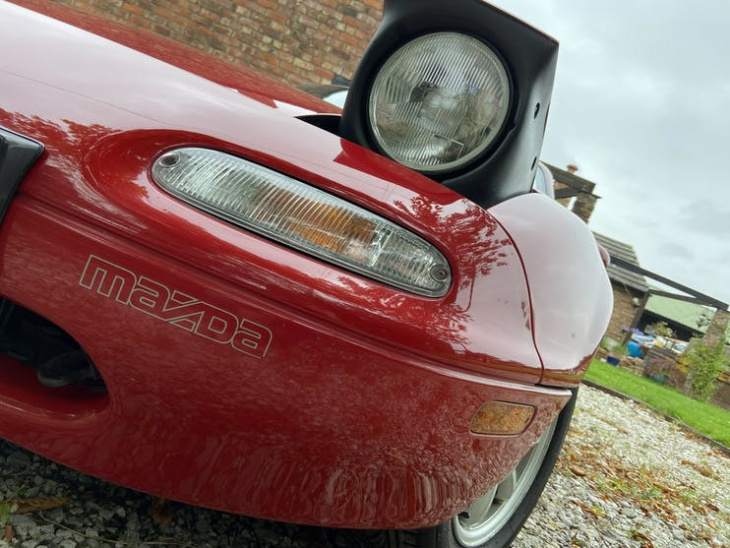
If you enjoyed this article, then please do consider checking out my YouTube channel, Twin-Cam where I have a more in-depth video version.
Keyword: The Mazda MX-5 is the Most Important Sports Car of All Time
